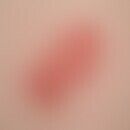Synonym(s)
HistoryThis section has been translated automatically.
Chapin and Mc Coy 1912; Wherry and Lamb 1914
DefinitionThis section has been translated automatically.
Rare, plague-like rodent disease in Europe with possible transmission to humans (zoonosis) and typical primary complex. Duty to report! S.a. tularemia.
You might also be interested in
PathogenThis section has been translated automatically.
Occurrence/EpidemiologyThis section has been translated automatically.
Rarely, in Germany 20 to 50 cases/year are registered. Occurrence has been described especially in the rural population in Scandinavia, Russia, Japan, China, USA, Canada.
EtiopathogenesisThis section has been translated automatically.
ManifestationThis section has been translated automatically.
LocalizationThis section has been translated automatically.
Clinical featuresThis section has been translated automatically.
Incubation period: 2-14 days. General symptoms with headache and muscle pain may occur. A distinction is made between:
- Cutaneous-glandular tularemia (ulcero-glandular form): primary effect at the site of entry, small nodular, livid infiltrate, ulcerating pustule. Painful, purulent melting, regional lymph node swelling, fistula formation. Development of a typhoid-like picture and atypical pneumonia are possible (5th day of illness). Roseolae and splenomegaly may occur.
- Muco-glandular tularemia: primary effect on the oral mucosa in the form of aphthae. Involvement of regional lymph nodes corresponding to the cutaneous-glandular form.
- Oculo-glandular tularemia: conjunctivitis, eyelid edema, involvement of regional lymph nodes. Usually spontaneous healing. Pulmonary (lung infiltrates) and abdominal forms are also observed with appropriate ports of entry. Immunity against systemic tularemia is possible after the disease has been overcome. However, recurrence of skin ulceration and reinfection is possible.
- Typhoid tularemia: Sickness and gastrointestinal symptoms. Complicating pneumonia with respiratory distress may occur.
- Allergic tularaemia: The tularaemia may be accompanied by polymorphous exanthema, sometimes scarlatina-like, also papulo-pustular or papulo-ulcerous. Nodular rashes are also possible.
DiagnosisThis section has been translated automatically.
Differential diagnosisThis section has been translated automatically.
Complication(s)This section has been translated automatically.
External therapyThis section has been translated automatically.
Notice! Early therapy is important because 1-5% of patients die if not treated adequately!
Internal therapyThis section has been translated automatically.
Drug of the 1st choice is streptomycin (e.g. Streptomycin Grünenthal) 2 times/day 0.5-1.0 g/day i.m. over 10 days, if necessary longer, in the full picture up to 25-30 mg/kg bw, including normalization of fever within the first 3-7 days, decrease of skin changes and lymphadenopathy over weeks.
As alternative antibiotics (especially for streptomycin resistance) spiramycin (e.g. selectomycin) 2-3 g/day p.o. for 7-14 days, gentamicin (e.g. re-fobacin) 3 mg/kg bw/day as i.m. injection, tetracycline (e.g. tetracycline Wolff) 3 times/day 500 mg p.o., erythromycin (erythro-hefa) 1.5-2 g divided into 2-3(-4) ED or ciprofloxacin 2 times/day 500 mg p.o.
Note(s)This section has been translated automatically.
The name tularemia comes from the place where the pathogen was first found, Tulare in California.
LiteratureThis section has been translated automatically.
- Faber M et al. (2018) Tularemia in Germany-A Re-emerging Zoonosis.Front Cell Infect Microbiol 8:40.
- Jensen WA, Kirsch CM (2003) Tularemia. Semin Respir Infect 18: 146-158
- McCoy GW, Chapin CW (1912) Further observations on a plague-like disease of rodents with a preliminary note on the causative agent, Bacterium tularense. J Infect Dis 10: 61-72
- McGinley-Smith DE, Tsao SS (2003) Dermatoses from ticks. J Am Acad Dermatol 49: 363-392
- Singh-Behl D et al (2003) Tick-borne infections. Dermatol Clin 21: 237-244
- Wherry WB, Lamb BH (1914) Infection of man with Bacterium tularense. J Infect Dis 15: 331-340
Incoming links (28)
Bacteriae; Cat scratch disease; Deer fly fever; Deer fly fever; Dress louse; Epidemic typhus; Francisella; Francisella tularensis infection; Granuloma, pseudotuberculoids; Hare plague; ... Show allOutgoing links (26)
Actinomycosis; Anthrax of the skin; Aphthae (overview); Boils; Ciprofloxacin; Clioquinol; Clioquinol lotio 0.5-5%; Conjunctivitis; Cutaneous tuberculosis (overview); Ekthyma; ... Show allDisclaimer
Please ask your physician for a reliable diagnosis. This website is only meant as a reference.




